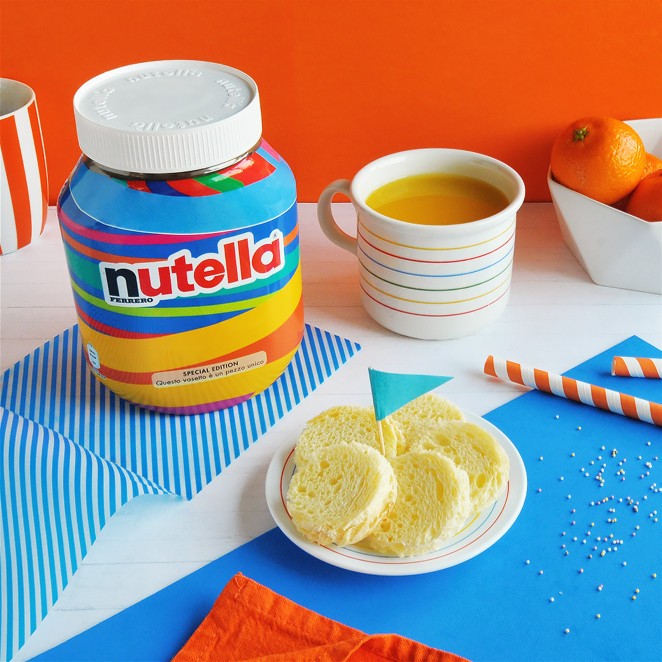An algorithm has usurped the traditional role of a designer to generate millions of unique, special edition packaging designs for Nutella, the legendary hazelnut chocolate spread brand. The custom algorithm pulls from a database of dozens of patterns and colours to create seven million (yes, 6 zeros) different versions of Nutella's bold new graphical identity, which have been splashed across the front of jars in Italy. Nutella's manufacturer Ferrero worked with Ogilvy & Mather Italy on the project, which is titled “Nutella Unica” (Unique Nutella).

The agency describes each Nutella Unica jar as being “like a piece of art,” with its own unique code that will allow it to be authenticated by collectors. The seven million jars were sold through Italian supermarkets, where Ogilvy & Mather says they sold out in one month. The agency also created an online and television advertising campaign around the packaging design. A spokesperson for the agency explained: “We think Nutella can be as special and expressive as every single one of its customers. With this objective, Nutella Unica was born – the first limited-edition made by seven million different jars. Dozens of patterns, thousands of colour combinations, one special algorithm.”

Both the campaign and the bespoke jars rely on the brand's highly recognisable lettering, which has meant other elements of the packaging design can be altered or even completely stripped away. This was made light of by a conceptual redesign in 2010 by Antrepo, which went viral by showing how minimal Nutella's labelling could go and still be easy to distinguish.
The hazelnut spread is already renowned for its personalised packaging, allowing consumers to create Nutella labels printed with words or names of their choice, but this is a whole new game entirely. It's certainly a neat idea. My primary qualm here, however, is that this isn't artificial intelligence, it's basically maths masquerading as design.

Robots are increasingly being called on to contribute to graphic design of course. The Vitra Design Museum recently saw an algorithm do the layout for a book accompanying its Hello, Robot exhibition, for example. That was a more tactile experience though, and the algorithm was presumably far more advanced. Here, it's just random shapes and colours. Often rather pretty shapes and colours perhaps, but shapes and colours nonetheless.

That being said, where do we draw the line? When does an algorithm cease to be a series of numbers and actually become something quantifiably present and relatable? These are the kinds of questions there are men and women far more qualified than me to speculate over and I open the comment section up to them.
Benjamin Hiorns is a freelance writer and struggling musician from Kidderminster in the UK.




